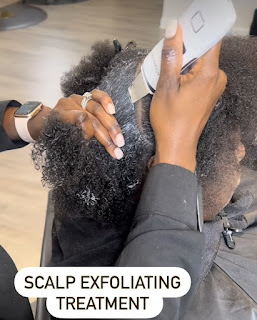What are the Benefits of Trimming Your Natural Hair

Trimming your natural hair offers several benefits: 1. Reduced Split Ends: Trimming removes split ends, preventing them from traveling up the hair shaft and causing further damage. 2. Maintained Length: Regular trims can actually help your hair grow longer by preventing breakage and split ends, allowing for healthier growth. 3. Improved Hair Health : Removing damaged ends helps maintain the overall health of your hair, making it look and feel better. 4. Enhanced Appearance : Trimming promotes a neat and polished look, enhancing the appearance of your hair. 5. Easier Styling : Hair with split ends can be harder to manage and style. Trimming makes styling easier and more manageable. 6. Prevention of Tangling : Split ends can lead to tangling, making your hair harder to comb or detangle. Trimming reduces this issue. 7. Volume and Thickness : Regular trims can make your hair appear thicker and fuller, as split ends can make hair look thin and sparse. 8. Prevention of...





























